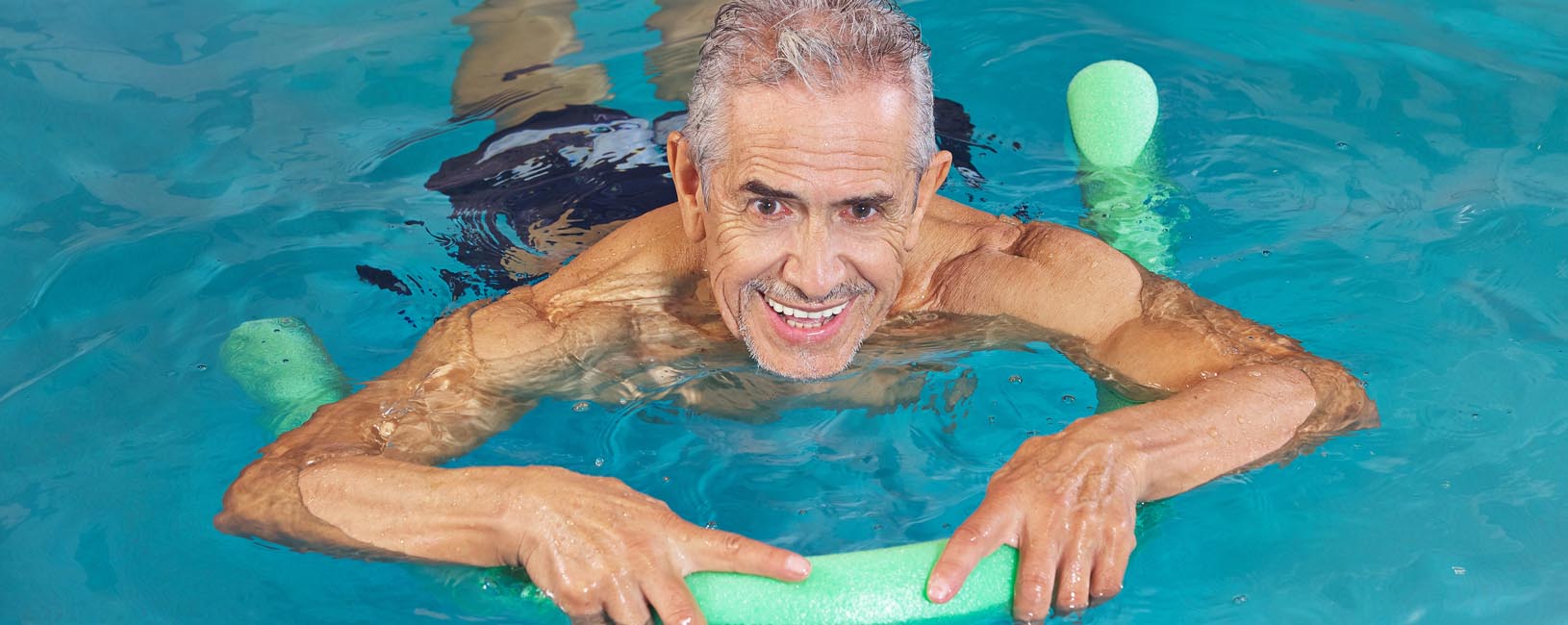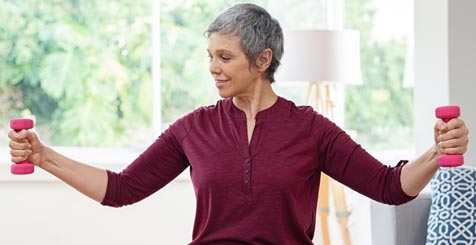After a routine coronary angioplasty and stent insertion, there are lots of good reasons to make sure that you focus on fitness – and there are plenty of ways to do it. Here’s why getting active after a stent procedure will put you on the road to recovery…
Exercise matters
Exercise will lift your mood with feel-good endorphins and help your heart to recover as you build up your fitness level. Being active will mean you sleep better at night, too. Other benefits include weight loss and lower blood pressure and cholesterol levels. It’s a simple equation: the more effort you put in, the better you’ll protect your heart for the future.
Following a cardiac rehabilitation programme has been shown to result in faster and safer recovery and better outcomes, particularly for those who have had a heart attack. If you can take advantage of a programme including tailored advice on physiotherapy and nutrition to improve heart health, make the most of it!
When to get active
Unless you’ve been advised otherwise by your hospital team, you should start getting active with light activities as soon as you’re home, remembering to balance out what you do with any discomfort around your wound. Avoid heavy lifting, pulling and pushing and other strenuous activity for about two weeks after your operation, or until your wound has healed.
You’ll be fine to tackle the stairs a day after your operation and bed rest isn’t necessary. In fact, it’s not a good idea to lounge around convalescing for days on end – this won’t help your heart to recover. If you have any other physical problems like arthritis, exercise is likely to help them too.

A week after your angioplasty operation, you should be able to resume gentle exercise such as golf or bowls and activities like fishing, housework and light gardening (wait until two weeks before attempting the heavier jobs like digging and mowing). You’ll also be able to drive and go back to work if your stent procedure was planned.
It’s fine to do simple light shopping like popping out for a newspaper straight away. Leave it a week until you tackle a supermarket shop involving a trolley and heavy bags.
Right exercise, right time
So how about an exercise programme? Walking on the flat is an ideal way to start improving your fitness gently, as you can decide how far – and how fast – you want to go. You can even call in on friends along the way and make it sociable!
Design your route to include some pleasant pitstops in case you need a breather – a park bench, a café or a wall at the right height can all provide the opportunity to sit down and rest.
Six weeks on from your procedure, you may be comfortable walking anything from one or two miles up to five miles. As time goes on, you can play with the difficulty of your walks by planning in slopes or speeding up.
Listen to your body: the aim is to raise your heart rate to the point where you’re slightly out of breath while still being able to talk comfortably. If you feel exhausted afterwards, you’re overdoing it, so dial it back and make your walks easier – slower and shorter – until your fitness level increases.
Swimming is another great way to get your body moving and you should be able to start gentle sessions after a week, with more strenuous swimming two weeks into your recovery. For most people, it’s fine to start exercising more vigorously with activities such as dancing, cycling or jogging a couple of weeks after a stent procedure, too.

Fitness at home
You don’t have to leave the house to work on getting active – there are plenty of things you can do at home to raise your heart rate. Some simple exercises include
- Heel raises – stand holding a chair back or the wall and slowly raise your body onto your tiptoes, then down again.
- March in place – march quickly on the spot while swinging your arms gently in time.
- Sit to stand – sit on a firm chair or stool, lean forwards and stand up, sit down again and repeat.
- Step-ups – using the bottom step of your stairs, place one foot fully on the step, step up with the other leg then step down and repeat.
- Free arm movements – breathing in raise both hands slowly to touch your shoulders, then slowly raise your arms above your head and stretch up. Breathing out, gently lower them again.
You can build up the number of repetitions as you become fitter.
If you’re wondering about resuming a physical relationship, there’s no need for a long period of abstinence. Sex is good for your heart, with the amount of physical exertion being around the same as climbing two flights of stairs, according to some experts. You can get back to normal whenever you’re ready, as long as it’s three days or more after your procedure.
Eating to get active
If you’re overweight, getting yourself down to a healthy weight will help, as will quitting smoking. Take a look at your diet and cut back on unhealthy snacks, avoiding anything high in salt and fat. Eating healthily will help your body to heal – not only that, but you’ll reduce the risk of complications and the potential for plaque building up in your arteries again. Research shows that eating plenty of fruits, vegetables, whole grains, nuts and seeds can reduce your risk of heart disease.
After a stent procedure, regular exercise and a healthy lifestyle are important to look after your heart and lessen the risk of future problems. Recovery should be quick, all being well, and you’re likely to reach the same level of fitness as you had before your stent procedure after just a month. You can find out more about improving heart health here.
Medical information. This is provided for informational purposes only and is not meant to be a substitute for advice by a doctor or other qualified healthcare professional. Patients should not use the information on the Active Patients website for diagnosing a health or fitness problem or disease. Patients should always consult with a doctor or other health professional for medical advice or information about diagnosis and treatment. Never ignore professional medical advice because of something you have read on Active Patients.






